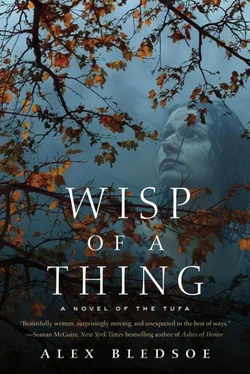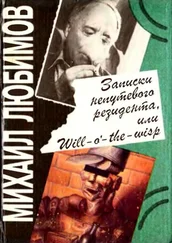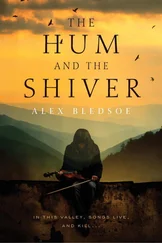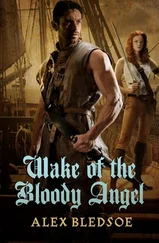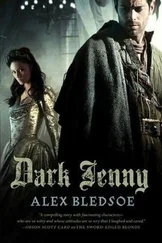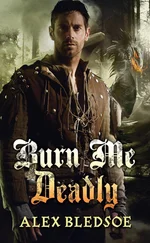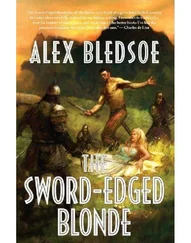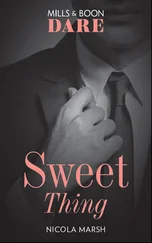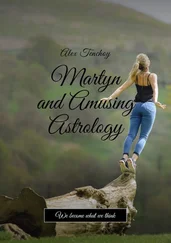He Googled directions, checked the library’s hours, then logged off and tried Bliss’s phone number again. He still got no answer. If she had caller ID, she’d think he was stalking her.
It took Rob an hour to drive to Cricket on the winding mountain roads. He had to sit ramrod straight the whole way, because reclining against the seat was too painful. The bruise across his back was now livid black, with purple and yellow edges, and it hurt to take deep breaths. This was turning into the most violent vacation of his life.
As he approached the strange little town, he noticed that the area felt completely different from the countryside around Needsville. It was nothing he could identify, yet the sun seemed brighter, the breezes cleaner, and the trees less gnarled and voluptuous. It felt, he realized, normal.
Finally he rounded a curve and arrived in Cricket. He felt as if he’d driven into a storybook. A dozen small, elaborate buildings lined the highway, all built in an unmistakably English style. They were painted in colorful pastels, and connected by wooden sidewalks. He parked next to the visitors’ center and went inside to ask directions to the library. The docent indicated the next building.
A churchlike spire rose from the metal-plated roof of the Roy Howard Library. Despite the docent’s assurances, Rob thought at first the library was closed, since no light showed from within. When he tried the door, though, it opened with a gentle chime.
The library’s interior consisted of one big room, with shelves along every available bit of the walls. There was, in fact, no real lighting, only the tall windows that managed to provide enough illumination, at least on a sunny day. There appeared to be no other patrons.
The librarian, a tall woman with freckles and glasses, blinked in surprise at his black eye, but quickly masked it behind a professional smile. The nameplate on the circulation desk said THELMA BREWER. “Welcome to the Howard Library. I have to tell you not to touch anything without putting on these.” She tapped a box of disposable cotton gloves. “Were you looking for anything in particular?”
Just before he asked about the newspaper, he had an idea, and dug out his phone. “Tell me, does this—” He showed her a photo of the tombstone with the inscription clearly visible. “—look familiar to you?”
“The stone, or the words?”
“The words.”
She took his phone and looked it over. “I can’t quite make it out.”
The inscription was perfectly clear to Rob, and he smiled wryly. “Hang on. Here’s what it says.” He quickly retrieved the cloud file with the transcribed words.
“Oh!” she exclaimed. “Yes, this is very familiar. Now where’s that book—?” She went to the card catalog. “Part of our charm is our complete lack of anything useful like a computer, on top of which the books here use an obsolete cataloging system. There’s not a volume here more recent than 1880.”
“You must get a lot of requests from researchers.”
“Not really. Most of what we have here is available in later editions in regular libraries. The physical volumes themselves are unique, but their contents aren’t. Except for, ironically, the one you want.” She found the card and went to one of the freestanding shelves.
Rob patiently waited as she searched for the book, until a painting on the end of the shelf unit caught his eye. It was a small canvas, displayed in an outsized, carved wooden frame. A group of fairies— here we go again, he thought—stood among flowers and weeds, watching the fairy in the center. This subject’s face was hidden, but he wore an odd cap, and he raised a double-bladed ax above his head. Hickory nuts, scattered at his feet, seemed to be the blow’s target.
Rob moved closer. It was really hard to see clearly, but he swore that the figure immediately to the right of the woodsman, watching with adoring eyes, looked familiar, down to her seeming awkwardness in her clothes.
When he realized why, he got goose bumps along his arms. Even with the painting’s stylization, it was clearly the image of Curnen Overbay.
That wasn’t the only familiar face, he realized. Directly across from the man with the ax, with an expression of mixed petulance and apprehension, was the old man from his dream, who’d sat on the stump of the gall-afflicted oak tree and complained about his foot. Here he hunched with his hands on his knees, a look of uncertainty and fear on his pointed little face.
Rob was still staring when Ms. Brewer discreetly cleared her throat behind him. “Sir?”
He turned around. “Did someone local paint this?”
“My heavens, no. That’s a famous painting by Richard Dadd. The Fairy Fellers’ Master-Stroke . It’s one of our most prized pieces. And that’s not his watercolor copy, either. You’ll find that in London’s famous Tate Gallery. This little treasure is the original.”
Rob looked around at its isolated location. It couldn’t be seen from the door, or even from most places in the room. “You don’t believe in showing it off.”
“You’re not the first person to say that,” she chuckled. “We’ve left it exactly where it was when it was first placed here. The original residents of Cricket didn’t show it off, either. Now, watch this.” She took out a small pen-sized flashlight and moved the circle of illumination across the painting.
The image was almost done in three dimensions, with layer upon layer of heavy oil paint creating a sense of depth. “Holy shit,” Rob whispered, then added quickly, “I mean—”
“In this case, that reaction is entirely appropriate,” Ms. Brewer said. “Dadd painted on this one canvas for eight years while he was confined in an asylum after he killed his father.” She seemed happy to share information with someone who appreciated it. “Now, would you like to see your poem?”
He followed her back to a reading table, where she opened a large and ornately illustrated book. Words in elaborate calligraphy covered the two displayed pages.
“This book is The Secret Commonwealth. It’s a collection of Scottish fairy folklore written in 1690 by an Episcopalian minister. It’s pretty well known, and the text itself is available on the Internet. But this particular edition has one very special addendum.”
Gently she placed the book facedown and opened the back cover. A folded piece of paper lay nestled into the spine. Yellowed with age, it was thicker than normal paper and covered with handwritten words. The top edge had been glued to the inside of the cover.
She very carefully unfolded it. “This poem is called ‘The Fate of the Tyrant Fae,’” Ms. Brewer said.
“Who’s Fay?” Rob asked.
“‘Fae’ is another term for fairy. Not in the Tinker Bell sense, but in the sense that the Fae were the original ancestors of the Celtic tribes. They occupied places like Ireland long before the Irish settled there.”
He fought to sound nonchalant. “Fairies, eh? No kidding.”
“Well, it’s folklore, of course, not anthropology. Although a lot of those New Agers claim that fairies are real, and that they can see them. I think they just spend too much time at their Renaissance Fairs and not enough time in the real world.” She tapped the poem with her cotton-gloved finger. “This is a verse epic about a man named Caisteal Guineach, who left Scotland to find the islands to the west, where people lived forever. There are many versions of this type of story in Gaelic literature.”
Rob recognized two of the middle stanzas as the epitaphs, and smiled when he realized he’d been right about their order. Then he read the whole poem.
A tyrant fae crossed the valley
His list of pains he could not tally
To his cause no one would rally
And so he left to lead no more.
Читать дальше
